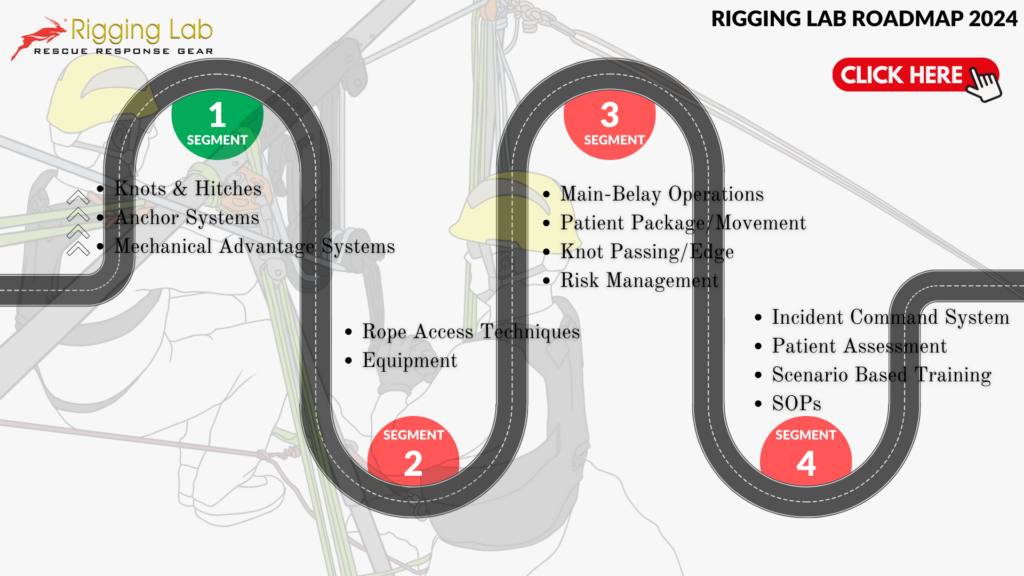In the realm of technical rope rescue and rigging, vision is an essential, multi-dimensional asset that intertwines technical proficiency with human empathy. It elevates the field from a mere technical endeavor to a comprehensive, compassionate, and coordinated rescue effort. By embracing this expanded definition of vision, rescue teams are not only equipped to face physical challenges but are also prepared to manage complex human and logistical elements that define successful rescue missions. This holistic approach to vision ensures that all phases of a rescue—from planning and execution to training and leadership—are conducted with both precision and sensitivity, ultimately enhancing both the safety and efficacy of rescue operations.
Definition and Applications of Vision in Rope Rescue and Rigging:
Physical Vision: Physical vision refers to the acute ability of rescue technicians to visually interpret their surroundings, identify risks, and monitor the ongoing dynamics of the rescue scene. This includes the direct observation of terrain, weather conditions, and potential hazards, which are crucial for immediate decision-making and operational safety.
Strategic Vision: Strategic vision involves the mental visualization of the entire rescue operation, from planning through execution. It encompasses the ability to foresee potential scenarios, devise contingency plans, and imagine the complex interplay of forces within a rescue system. This vision ensures that operations are not only reactive to immediate conditions but are also proactively designed to handle unforeseen circumstances effectively.
Communicative Vision: Communicative vision is the capability to convey clear and coherent plans, intentions, and commands across the rescue team. It ensures that all members share a common understanding of the task at hand, facilitating coordinated efforts and cohesive team dynamics. This aspect of vision is vital in maintaining synchronized actions and adapting strategies in real-time, based on the operational feedback.
Innovative Vision: Innovative vision drives the continual advancement of techniques and technologies in rope rescue. It inspires the adoption of new tools, the improvement of methods, and the education of rescue personnel. Vision in this sense fosters a culture of learning and adaptation, preparing teams not only for current challenges but also for future developments in the field.
Empathetic Vision: Empathetic vision is the ability to perceive and respond to the emotional and psychological states of those being rescued. It involves understanding the distress and trauma experienced by victims, ensuring that technical operations are complemented by compassionate human interactions. This form of vision underscores the humanitarian core of rope rescue operations, emphasizing the importance of treating victims with dignity and care.
Here are specific examples illustrating how vision—both literal and metaphorical—plays a critical role in various aspects of technical rope rescue operations:
Vision in Safety and Risk Assessment:
Literal Example: During a mountain rescue operation, the team leader uses binoculars to visually assess the condition of a cliff face from which a climber has fallen. This literal vision allows the leader to spot loose rocks and unstable areas that could pose additional risks during the rescue. Metaphorical Example: The same leader must envision possible future scenarios, like the risk of further rock falls or sudden weather changes. This foresight prompts the preparation of alternative evacuation routes and the readying of equipment suited for adverse weather conditions, ensuring the team can adapt to any changes.
Vision in Planning and Strategy:
Literal Example: A rope rescue technician visually inspects the potential anchor points for setting up a high-line system across a river to rescue a stranded kayaker. By directly observing the surroundings, the technician can select the most robust trees and land features for anchors. Metaphorical Example: Strategically, the technician must envision the sequence of the operation, including anticipating the force dynamics that will act on the ropes and the high-line once the kayaker’s weight is applied. This visualization helps in choosing the right equipment and rigging techniques to safely transfer the kayaker across the river.
Vision Enhancing Communication and Coordination:
Literal Example: In a complex cave rescue, team members use helmet-mounted cameras to share real-time visual feeds with the surface team. This literal vision helps in navigating tight passages and making informed decisions based on the most current visual data. Metaphorical Example: The operation’s coordinator envisions the cave’s layout and the team’s progress within it, using this mental map to direct resources efficiently and adapt tactics as the team advances, ensuring smooth coordination and resource allocation.
Vision Driving Training and Development:
Literal Example: New recruits in a rope rescue team use VR (Virtual Reality) simulations to visualize and practice navigating through hazardous rescue environments. This training method enhances their visual and spatial awareness without the immediate risks of real-world training. Metaphorical Example: A training officer envisions a future where drones are regularly used in rope rescues, leading to the development of a training module that incorporates drone technology for aerial reconnaissance and equipment delivery, preparing the team for next-generation rescue techniques.
Vision in Leadership and Teamwork:
Literal Example: During a debriefing, the team leader uses diagrams and flowcharts to visually explain what went well and what didn’t in a recent rescue mission. This helps the team see their performance and understand the practical outcomes of their actions. Metaphorical Example: The same leader develops a vision for a more resilient and adaptable team. This vision includes team-building exercises that emphasize trust, collaboration, and adaptability, crucial qualities for high-stress rescue operations.
Vision in Empathy and Compassion:
Literal Example: A rescue technician observes the body language and facial expressions of a trapped victim to assess their level of panic or shock. This direct observation helps tailor their approach to communicate effectively and provide reassurance. Metaphorical Example: The technician also envisions the emotional and psychological impact of the rescue on the victim, using this insight to guide how they interact, focusing on calm and empathetic communication to alleviate the victim’s fear.
These examples show how vision is integral to all facets of rope rescue, blending the tangible ability to see with the intangible ability to anticipate and empathize, thereby enhancing the effectiveness and humanity of rescue operations.
Peace on your Days
Lance










